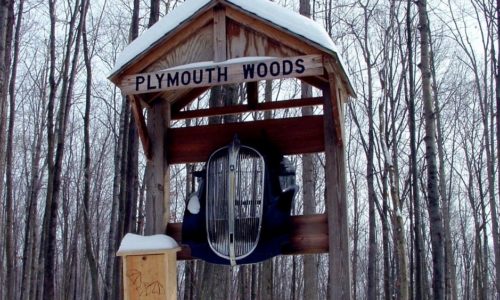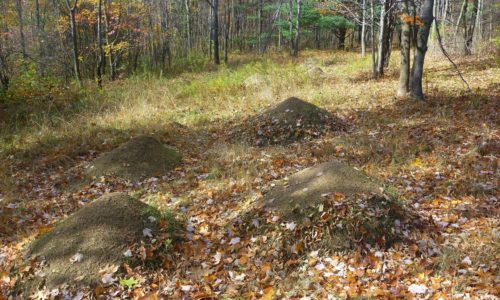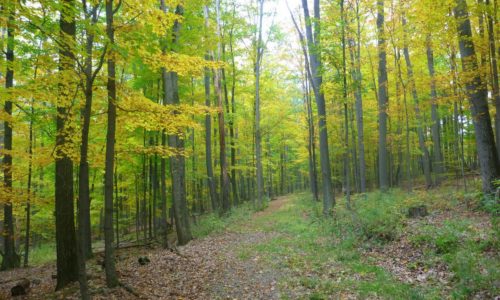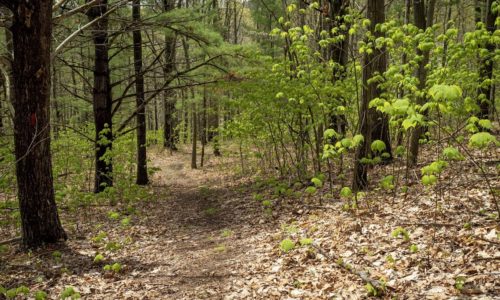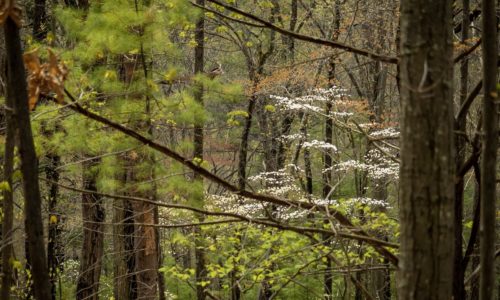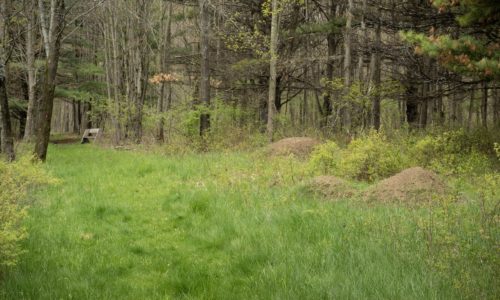Take your eyes off your feet and look up—maybe you’ll see a porcupine taking a sunbath high in a big old oak.
Natural History
This is a particularly fine example of a mature oak-hickory forest. Most species of oak and hickory known in our region are found here, along with a few American chestnuts and healthy populations of mountain laurel and flowering dogwood. Those accustomed to forests farther north in our region will find this one quite different: fewer sugar maples, for example.
In addition to its exemplary forest, this 88-acre preserve encompasses a lovely little ravine and a small wetland. This may be the Land Trust’s only preserve with a handsome-and wonderfully fragrant-wetland plant called “Sweet Flag” (Acorus calamus). Like Jack-in-the-Pulpit, Sweet Flag is in the Arum Family. The long, narrow leaves look like cattail, but have a crease up the middle.
- Photo: Eben McLane
- Photo: FLLT
- Photo: FLLT
- Photo: Chris Ray
- Photo: Chris Ray
- Photo: Chris Ray
Birds typical of our hardwood forests, such as Wild Turkey, Ruffed Grouse, Pileated Woodpecker, Wood Pewee, Black-capped Chickadee, Wood Thrush, Rose-breasted Grosbeak, Ovenbird and several other warbler species make their home at the preserve, in addition to less common species like Black-billed Cuckoo and Winter Wren. Listen for this wren’s long, melodious, high-pitched song, especially in the vicinity of the small ravine. Cuckoos are more common during years when their favorite food-fuzzy caterpillars such as tent or spongy moth caterpillars-are abundant.
The preserve also harbors the typical mammals of our region, as well as porcupine. And, of course, Red-backed Salamanders-probably our most common forest salamander-live at the preserve. These lungless salamanders live in damp areas, never in the water, and (unlike most salamanders) the female guards her eggs.
As you hike the red trail through the meadow, you undoubtedly will notice the numerous anthills. These are home to the Allegheny Mound Ant, an important part of the preserve’s ecology. To keep the mounds exposed to full sun, the ants inject formic acid into the base of plants that would otherwise shade the mounds. These ants make among the largest and most complex mounds of any ant. A colony can persist for over 100 years. Allegheny Mound Ants can both sting and bite. Nevertheless, bears love to eat the larvae and eggs.
Recent History
Dr. Edward Grandt, well-known Elmira physician (now deceased), has found a quiet refuge in this majestic forest for many years. In 2003, he generously donated his land to the Finger Lakes Land Trust. His goals were simple – to protect it in perpetuity and to share it with the public. For years, he maintained the trail system and a small scenic meadow.
Long ago, this property was farmed, but even aerial photos from the early 1960’s show most of it heavily forested, with just two small fields.
In the years since then, these have shrunk further, and now provide visitors with attractive openings in the forest. Based on the ages of the trees, forester Michael DeMunn believes that most farming on the property probably came to an end shortly after the Civil War.
Dr. Grandt named the site after a 1937 Plymouth automobile that was dismantled by a previous owner of the property so that his children couldn’t drive the vehicle on nearby roads. Today, the grill of that same car proudly graces the preserve’s entry sign.
Land Acknowledgment
The Finger Lakes Land Trust recognizes that our nature preserves exist on the homeland of the Haudenosaunee. We hope to honor indigenous peoples’ ongoing relationship with the land by conserving wild places forever.
Public Use
Please see our public use policies for recreational activities on nature preserves.
Go Finger Lakes
Go Finger Lakes is the free web site created by the Finger Lakes Land Trust to promote recreation and conservation. Use the interactive map of 50+ hiking, biking, paddling, skiing, and outdoor adventure destinations across the region!

